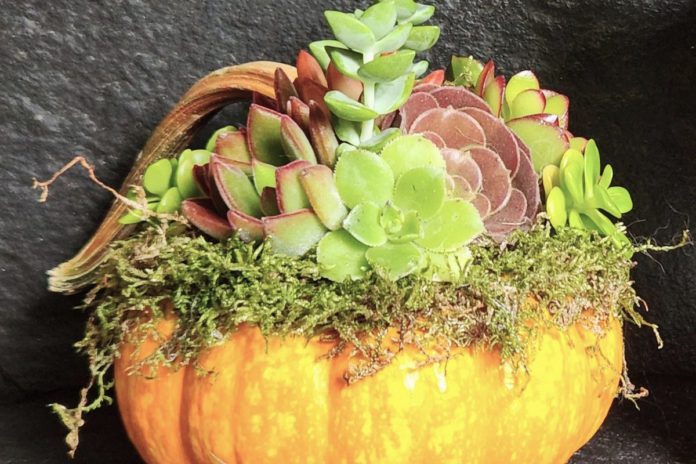Winter is coming! Although with the recent October heatwave overwhelming the Bay Area, that might be hard to imagine. It might also be hard to imagine preparing the garden for winter during a heatwave. However, October is the time to start thinking about winter protection for certain plants in the garden, succulents in particular.
Succulents are a group of plants that store excess water in their leaves, stems and roots which allows them to go for long periods of time without receiving supplemental water. This feature makes them a great choice for drought tolerant or low water use gardens. Many thrive in high temperatures, while others may struggle a little but are in no danger of dying from the heat. Most succulents do not tolerate excessive water, which causes the plants to rot. Temperatures near and below freezing can also damage them as the abundant water inside their leaves and stems expands as it turns to ice.
A fall preparation program for protecting succulents in the garden begins with knowing which succulents need to be protected. Any succulents that are growing in soil or pots that remain damp from rainwater for more than a day or two are in danger of rotting. “Soft” succulents such as aloes, agaves and portulacarias with tender and/or thick fleshy leaves will not tolerate near freezing temperatures. “Hard” succulents such as sedum, euphorbias and sempervivums have firmer leaves which hold less water and can tolerate temperatures just below freezing.
Once it is determined which succulents are at risk, a number of precautionary measures can be taken. Moving vulnerable succulents is an easy way to ensure their survival. Succulents already in pots can be relocated indoors, into a backyard greenhouse, a covered patio or under an evergreen tree to protect them from both excessive rainwater and frigid temperatures. At-risk succulents in the ground can be transplanted to containers which can be moved. Planting cuttings in a pot and moving them is an even easier way to save a particular variety.
If succulents are going to be left in the ground, there are other precautions to take. Making sure the surrounding soil drains well is the primary one. Amending the soil with sand or crushed lava rock will help, as will mulching the area around their roots with gravel instead of wood chips. Trenches to divert excess rainwater can also be dug. Throughout the fall and winter, rotting leaves should be pruned off, but dead dry leaves can be left on to help protect new growth from the frost. On nights when the temperature is close to freezing, spraying the succulents with water can protect them a couple of degrees below freezing because moist soil stays warmer than dry soil.
Covering succulents on cold nights can also protect them to a few degrees below freezing. Using the proper material is crucial. The cover should be made from a breathable, non-plastic material. Incorrect materials can create an environment where fungal diseases can flourish, contact with the plant can cause frost damage, and more cold air reaches the plant than with no protective covering. The important characteristic of the cover is that it should allow for air circulation. Burlap tarps, bedsheets, landscape fabric and frost blankets are good options. Fall, before freezing temperatures arrive, is the time to purchase proper coverings so they will be immediately to hand when needed later in the year.
Fall and winter can also be the time to showcase certain succulents. There are a number of succulents that have colored foliage or flowers that complement fall and winter seasons. Sedum “Orange” or Echeveria “Orange Champagne” are two orange succulents that make wonderful fall centerpieces. Aeonium “Zwartkop” and Echeveria “Black Prince” are black foliaged succulents that pair well with orange ones for halloween displays. Making a succulent pumpkin by planting succulents in a hollowed-out pumpkin also is a festive way to use succulents. Euphorbia tirucalli “Sticks on Fire,” which has brilliant red tips on green stems and Schlumbergera (Christmas cactus) “Kompeitu Fire,” which has bright red flowers that bloom in winter, both make great holiday container plants.
Succulents are often ignored as the weather gets colder and wetter because they are commonly associated with the warm spring and the hot dry summer months. However, they still need care and can add interest to gardens and pots in the fall and winter. October is a great time to prepare them for the winter that is coming.
Daniel O’Donnell is the co-owner and operator of an organic landscape design/build company in Fremont. www.Chrysalis-Gardens.com




